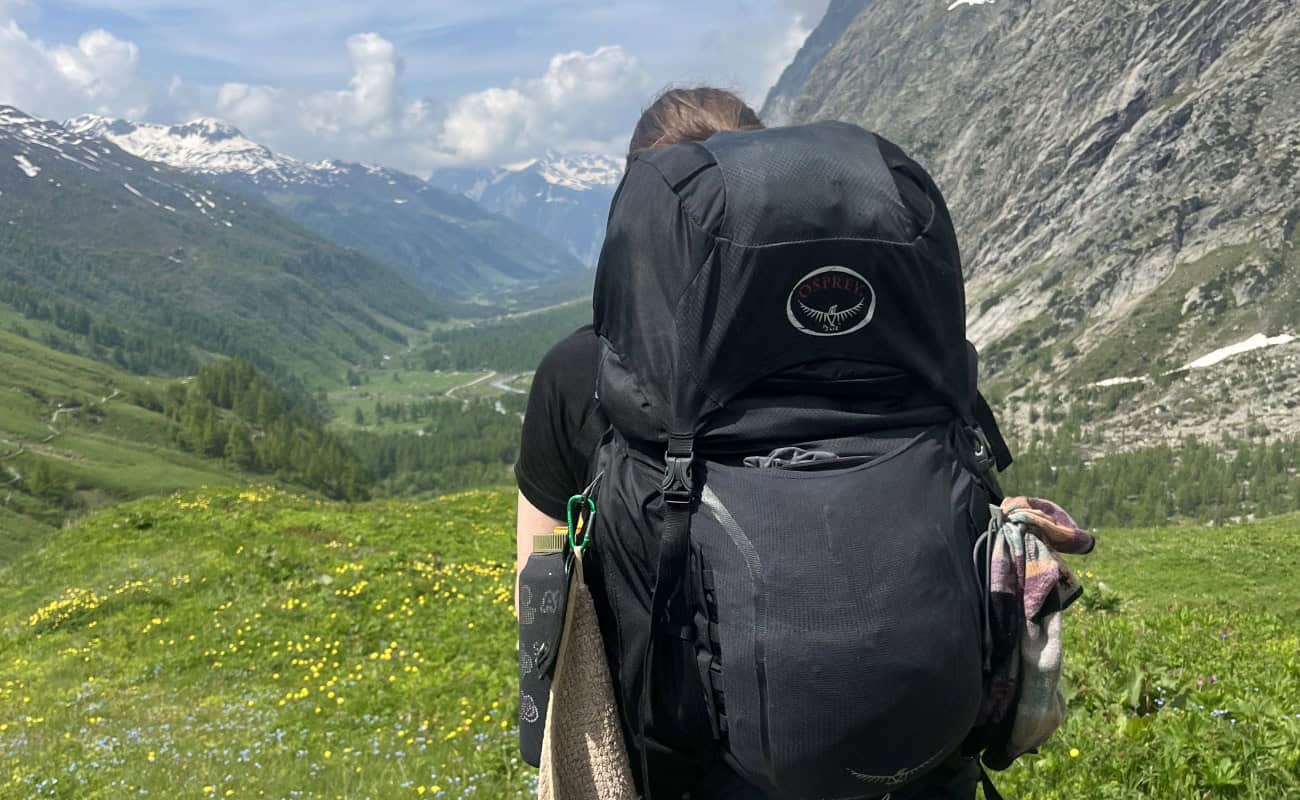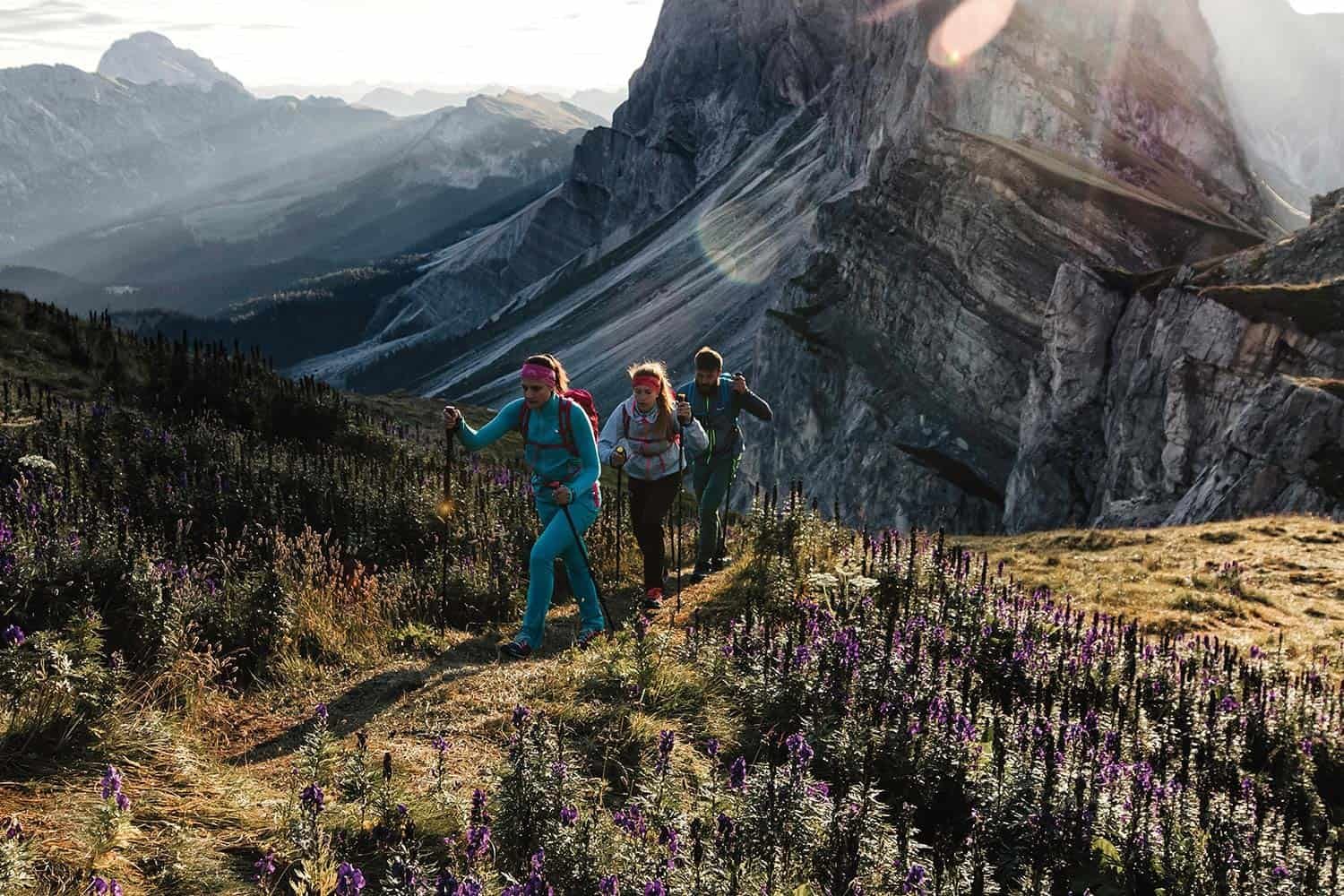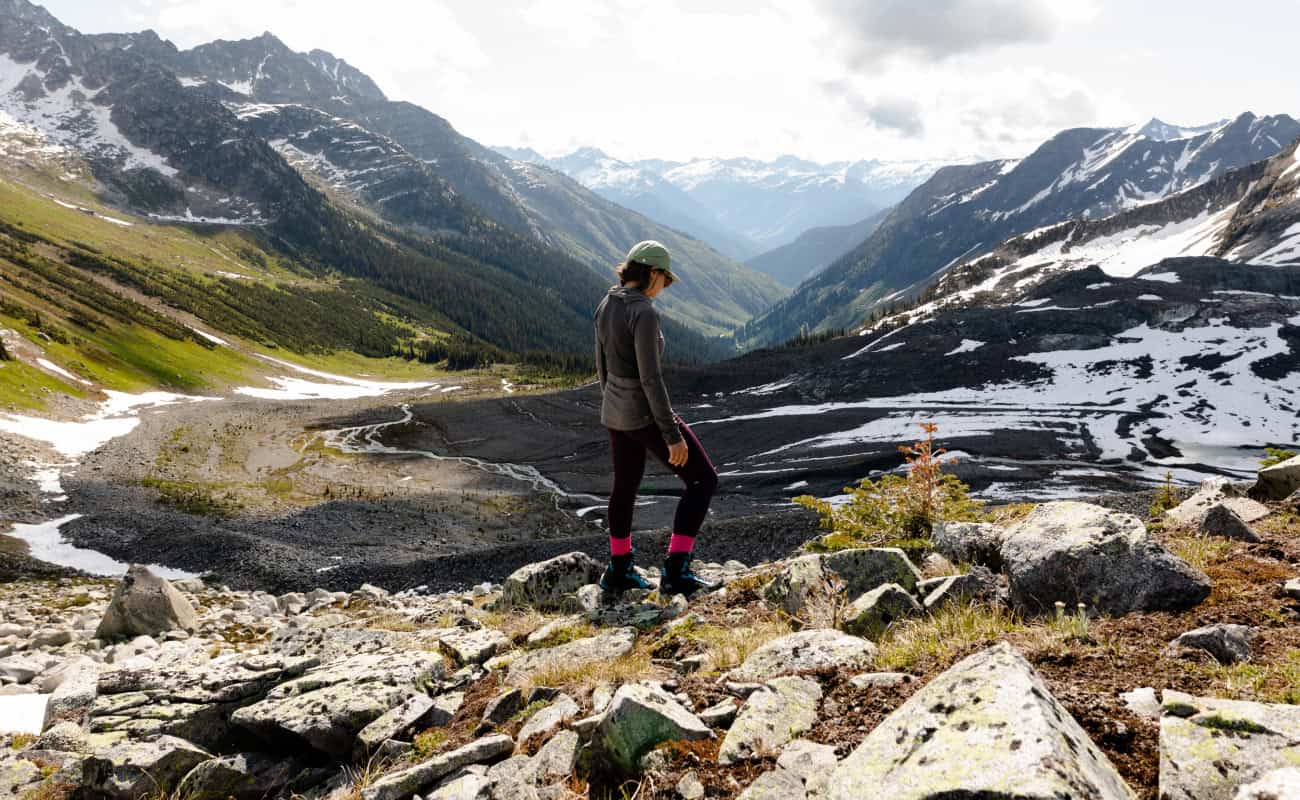Getting out on the trail on a rainy day offers a unique way of connecting with nature. With the right prep and a positive mindset, you can stay dry, comfortable, and safe—making the experience both enjoyable and memorable.
In this article, we’ll share 10 essential tips to help you navigate the challenges of hiking in wet conditions, from choosing the right gear to recognizing when it’s time to turn back.
1. Check the Weather
Before heading out, take the time to check the weather conditions. Learning to interpret forecasts is an essential element when embarking on a rainy-day adventure. Pay attention to details like probability of precipitation (POP), wind speed, and direction.
This will help you decide what to bring and what to wear, especially if big drops in temperature or high winds are expected. In the event of thunderstorms, this can also clue you in to places that should be avoided, like exposed ridgelines. Most of all, accept that you’re going to get wet!
2. Wear Waterproof Gear
Quality rainwear can mean the difference between getting wet and getting soaking wet. For starters, you’ll want to equip yourself with a good jacket and some waterproof pants. We recommend the Mountain Hardwear Exposure/2 Gore-Tex Paclite Jacket and the Haglöfs L.I.M GTX Pants, respectively. Fabrics like Gore-Tex are especially prized for their ability to shed rain while remaining breathable. You might also consider using a waterproof hat, too, like the lightweight, functional, and stylish Outdoor Research Helium Rain Full Brim Hat.
3. Pack Extra Layers
Packing additional layers will give you the flexibility to adapt to changing conditions on the trail. When the winds pick up and the rain starts pouring, you’ll be able to quickly adjust your outfit to meet the demands of the weather.
First off, it’s a good idea to wear a moisture-wicking base layer. This will help your core warm and dry. Next, an insulating layer—such as a puffer jacket or fleece—will enable you to retain heat more effectively. Lastly, top it all off with your waterproof shell to keep the rain at bay.
Having some extra layers in your pack also ensures you have a change of clothes ready when the sun starts shining again!
4. Use a Waterproof Pack Cover
Besides keeping yourself dry, you also need to keep your gear dry. That’s where a pack cover comes in. By waterproofing the outside of your pack, a cover can effectively prevent water penetration. This ensures that all of your belongings—such as extra clothing, food, and electronics—remain dry and usable throughout your hike.
For day hikes, the lightweight and reflective Osprey High Visibility Raincover 20-35L is the perfect pack companion.
5. Choose the Right Footwear
Whether you prefer hiking boots or shoes, waterproof footwear is essential in wet conditions. Opt for a sturdy pair that includes a Gore-Tex outer membrane and excellent traction. This will help you maintain your balance on slippery and muddy trails.
If you don’t trust your feet in these conditions, consider bringing along a set of trekking poles, like the Black Diamond Alpine Carbon Cork Trekking Poles, for even greater traction and stability.
For rain protection that extends above the ankles, pair your footwear with some waterproof gaiters. The Outdoor Research Helium Gaiters are a great choice for their breathability, durable construction, and low-profile design.
6. Stay on Marked Trails
For safety, always stay on designated paths—especially in rainy conditions. Marked trails are typically constructed to handle bad weather and are therefore less likely to be hazardous.
For example, various methods are used in order to prevent potentially dangerous washouts. In contrast, navigating off-trail can be dangerous due to slippery surfaces, precipitous inclines, and bad visibility.
7. Be Aware of Flash Floods
Flash floods can occur suddenly during heavy rains. Be aware of the risks and know how to identify potential flood areas. Avoid hiking in low-lying areas, near rivers, or in canyons where flash floods are more likely to happen. Always have an escape plan and know the fastest route to higher ground.
What’s more, if you’re hiking in an area that requires a tidal crossing (like the Bay of Fundy), keep in mind that heavy rains and high winds may make the tides more unpredictable and therefore more dangerous.
8. Protect Your Electronics
Electronics have become ubiquitous on the trail, from phones and cameras to charging blocks and GPS devices. Many of them even come in waterproof versions. That said, if you don’t have the cash to spend on those, you can simply resort to using protective bags or cases.
Pro tip!
Ziplocks are an especially cheap and effective option. Additionally, a good backpack, built with a waterproof fabric or finished with a DWR coating, will greatly increase your chances of keeping expensive electronics dry on the trail.
9. Keep Hydrated and Fueled
Through rain or shine, snow or sleet, it’s key to stay hydrated and well-fed on the trail. Always bring along one more litre of water than you think you’ll actually need. For food, pack easy-to-carry, high calorie, non-perishable snacks. This includes the obvious like trail mix and protein bars, but fresh fruit and PB&J sandwiches are definitely worth their weight in nutrients.
Depending on your style of backpack, a hydration bladder can offer easy access to water without having to stop each time you need a sip.
10. Know When to Turn Back
No matter the colour of the sky, safety should always be your top priority. Understand the importance of recognizing dangerous conditions and making the decision to turn back if necessary. Factors such as worsening weather, impassable trails, or physical exhaustion should prompt you to prioritise safety over persistence.
To reduce your chances of getting into trouble, make sure to bring along the right hiking gear and apparel for your trip.
Conclusion
This concludes our top 10 tips for hiking in the rain—and having a great time doing it! Let’s recap what we’ve learned:
- Check the weather forecast
- Wear waterproof gear
- Pack extra layers
- Use a waterproof backpack cover
- Choose the right footwear
- Stay on marked trails
- Be aware of flash floods
- Protect your electronics
- Keep hydrated and fueled
- Know when to turn back
Most of all, it’s important to remember that rainy-day hikes can be just as fun and rewarding as sunny days—if not more so. You just have to come prepared and with the right mindset!









